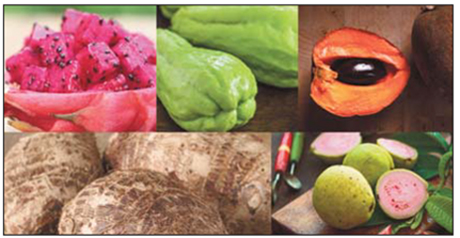Welcome to Blue Book!
Are you ready to join the thousands of companies who rely on Blue Book to drive smarter decisions? View our plans and get started today!
Still have questions? We’d love to show you what Blue Book can do for you. Drop us a line– we’ve been waiting for you.

Hispanic food has been a game-changer for many American diets—heavily influencing purchases in supermarkets, home cooking, and dining at restaurants. Fruits and vegetables that were once considered rare—avocados, chiles, and tomatillos, for example—have become staples in kitchens across the country. As the American palate continues to extend its culinary boundaries, the exotic is going mainstream.
What accounts for this seismic shift? Primarily, a growing Hispanic community. According to the U.S. Census Bureau, as of 2014 Hispanics accounted for 17 percent or 54 million of the country’s population; between 2015 and 2050, this number will jump by 86 percent. As their numbers grow, so does the purchasing power of the nation’s Hispanics, climbing from $1.3 trillion in 2014 to an expected $1.7 trillion in 2017.
“Hispanics are fueling the economy,” confirms Robin Lucky, CEO of International Agricultural Marketing Management in Rio Rico, Arizona. “They’re the youngest demographic, they’re having kids, they spend money, and their spending power is growing exponentially every year. They are one of the key drivers to evolving food trends.”
In this second look at Hispanic commodities, we explore another group of fruit and vegetables—guava, mamey sapote, malanga, pitaya, and chayote—and discover what makes them ‘hot’ and why their popularity is growing.
GAGA OVER GUAVA
Available year-round, guava (Psidium guajava), also known as guayaba, is adaptable to both dry and humid climates. While it grows as easily in the mountains of Ecuador as it does on a Caribbean island, the top growing regions for guava consumed in the United States are Florida and Mexico. As with many tropical fruits, guava is an easy target for whiteflies and other pests; however, imports from Mexico are irradiated and available year-round.
Nearly all of the guava grown in the United States comes from southern Florida. The growing season runs all year long, according to Adrian Capote, co-owner and vice president of sales of J&C Tropicals in Miami, but peak season is from April to October. “In the summer, tropical fruits go crazy,” he comments. “That’s when we’re knee-deep in guava.”
Popular across the Caribbean and Central America, guava continues to gain traction in U.S. markets. Eddie Caram, general manager of Princeton, Florida-based New Limeco, LLC says he is selling more and more guavas to national chain stores and supermarkets. Demand is especially high in the Northeast Corridor, California, and Texas, all of which boast large Hispanic and Asian populations. “There’s a cross-cultural pollination between these groups when it comes to food,” Caram explains. “Many Hispanic tropical fruits and root vegetables grow in the same climate in parts of Southeast Asia.”
Robert Schueller, director of public relations at Melissa’s/World Variety Produce, Inc. in Los Angeles, California, agrees. “We’ve seen a trend with this fruit, especially in high demographic regions of the United States, mainly in Hispanic and Asian stores.”




